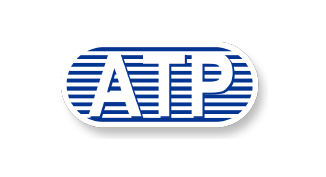AI Case Studies
Panel
Utilizing machine learning technology, Profet AI assists enterprises in achieving intelligent monitoring and fault prediction in panel manufacturing processes. This enhances equipment efficiency, reduces maintenance costs, and further improves production yield.
Application Scenarios
Process Optimization, Virtual Measurement, Maintenance Prediction
Status Quo
The panel industry is one of Taiwan’s key sectors, holding a significant position in the global supply chain. However, recent years have seen an imbalance in market supply and demand, leading to overcapacity and falling prices. Additionally, competition from low-cost producers in Asia has made it difficult for the panel industry to maintain profitability.
Challenges
To address these challenges, continuous improvements in panel manufacturing and inspection are essential to enhance yield and reduce production costs. Leveraging machine learning technology can enable intelligent monitoring and fault prediction in the panel manufacturing process. This improves equipment efficiency, reduces maintenance costs, and further enhances production yield. Furthermore, Panel designs must be continually optimized based on market demand and consumer preferences to ensure product competitiveness and maintain market position.
Etching Line Width Prediction
Etching is a crucial step in semiconductor manufacturing, where variations in line width can significantly affect the performance and reliability of semiconductor devices.
Pain Points Analysis:
- Complex Etching Process: The type, concentration, temperature, and pressure of etchants, along with the material properties of the wafers, can all influence changes in line width.
- Lack of Real-Time Feedback: Detecting factors that affect line width changes takes time. Thus, variations in the process may be overlooked or responded to late, resulting in quality issues.
- Dependence on Skilled Personnel: Monitoring and analyzing the process rely heavily on skilled personnel, which requires substantial time and labor costs.
Benefits and Outcomes:
- Improved Prediction Accuracy: Enhance the accuracy of line width prediction, saving 30-50% of the time needed for process variation detection.
- Real-Time Process Adjustment: Adjust process parameters in real time to reduce the defect rate on the production line, improving product quality by 15%.
Virtual Metrology (VM) for Process
Currently, the process inspection is done by sampling, and the quality control unit aims to utilize AI for virtual full inspection to reduce the risk of missing batches with quality anomalies.
Pain Points Analysis:
- High Cost of Manual Sampling: Historically, extensive human resources have been required for sampling inspections, leading to high labor and time costs.
- Measurement Limitations: Certain processes or products may be difficult to measure directly. For example, if the inspection method is destructive, the product is damaged each time it is inspected.
- Delayed Response Time: Actual measurements may take hours or even longer to yield results, causing delayed response times.
Benefits and Outcomes:
- Significantly Reduce the Need for Actual Measurements: Increase production efficiency by 25%.
- Accelerate Product Design and Process Optimization: Improve the speed and efficiency of design and optimization, reducing development costs by 16%.
- Reduce Defect Rate and Enhance Product Quality: Improve product quality by 8%.
Rapid Adjustment and Optimization of Grinding Parameters
Grinding is a critical process in the panel industry, requiring consideration of incoming materials, previous processing steps, and current environmental conditions, all of which can affect the speed of changeover.
Pain Points Analysis:
- Numerous Influencing Factors: Many factors impact grinding outcomes, making it challenging to analyze using simple statistical methods.
- Response Time: In a production model with high mix and low volume, the speed of changeover significantly affects capacity, necessitating effective tools for accelerating parameter adjustments.
- Quality Determined by Experience: Experienced engineers not only adjust parameters but also achieve better product quality. It is crucial to enable less experienced staff to optimize parameter adjustments effectively.
Benefits and Outcomes:
- Rapid and Effective Modeling: Reduce analysis time by 80%.
- Increase Speed and Efficiency of Product Design and Process Optimization: Improve changeover and parameter adjustment speed by 20%.
- Reduce Defect Rate and Enhance Product Quality: Improve product quality by 6%.


